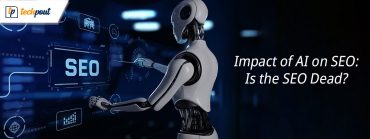Legacy is Not Synonymous with Delay: Strategies for Transforming Old Systems into Valuable Assets

Legacy systems, inherited from a technological past, still play crucial roles in the operations of many organizations. However, technological obsolescence and incompatibility with current demands pose significant challenges. This article explores the nature of legacy systems, the challenges they present, and strategies for their modernization, with insights from software engineering expert Lucas Mohallem Ferraz.
What Are Legacy Systems and Their Challenges
Legacy systems are systems developed and implemented in the past, which still perform critical functions in the daily operations of an organization. Despite their importance, they are often based on technologies, programming languages, and architectural standards that have become obsolete.
These systems face challenges such as:
- Technolgical Obsolescence: The technology underlying these systems may include outdated hardware, obsolete databases, and programming languages that are no longer supported or widely used.
- Security Vulnerabilities: Lack of software updates and incompatibility with new technologies increase vulnerability to cyberattacks.
- High Maintenance Costs: The scarcity of qualified professionals to work with old technologies and the lack of official support make maintenance costly.
- Difficuloty of Scalability: The old architecture and technologies limit the ability to adapt and grow the systems.
Legacy System Assessment Process
The assessment of legacy systems is essential to determine the best strategy to be adopted. Several methodologies can be used, such as:
- SWOT Analysis: Assesses the strengths, weaknesses, opportunities, and threats of the system.\
- Impact Analysis: Examines the effects of replacing, updating, or maintaining the system in various areas of the organization.
- Risk Analysis: Identifies and assesses risks associated with continued maintenance or replacement of the system.
- Cost-Benefit Analysis: Compares the costs and benefits of maintaining, updating, or replacing the system.
- Technical Feasibility Analysis: Assesses the compatibility of the legacy system with new technologies and the technical complexity of a possible update or replacement.

Also know: 5 Ways Technology Can Improve Your Finances
Modernizing Legacy Systems: The Expert’s View
Lucas Mohallem Ferraz, a technology expert with extensive experience in projects at companies such as Amazon, Nestlé, and Coca-Cola, emphasizes that “modernization is not just a necessity, but a strategic opportunity. It’s about transforming what was a burden into a springboard for the future.” He also stresses that “successful modernization requires a deep understanding of the existing system, a clear plan, and careful execution.”
Reasons to Modernize and Opportunities
Legacy system modernization is driven by several factors, such as software improvement, cost reduction, adaptation to new technologies and business models, and improvement in the time to launch new products and services. Ferraz adds: “Modernization is not just about solving problems of the past, but about opening doors to the future. It’s about creating a system that is agile, scalable, and able to keep up with the evolution of the business.”
Modernization allows the incorporation of advanced technologies, such as Machine Learning and Augmented Reality, and the exploration of new business models. This process not only solves immediate problems but also positions the company more strategically for the future. “By modernizing, companies are not only updating their systems, but also their mindset. It’s a step towards a culture of continuous innovation,” concludes Ferraz.
Conclusion
Companies that invest in modernizing their legacy systems turn challenges into opportunities, ensuring a robust technological foundation prepared for the challenges of the digital age. Modernization is not just a matter of technological updating, but a strategy to boost growth, innovation, and competitiveness in the constantly evolving digital landscape.
Lucas Mohallem Ferraz exemplifies the trajectory of a specialist who not only understands the importance of legacy system modernization but also leads strategic initiatives to transform these challenges into opportunities. With over a decade of experience in national and international projects for giants like Amazon, Nestlé, Coca-Cola, Pfizer, and Bradesco Seguros, Ferraz has stood out as a technical leader, high-performance solutions architect, and speaker at prestigious events like SAP Financial Services and SAP NOW.
Throughout his career, Ferraz has been responsible for crucial projects, such as the implementation of real-time online payments for Bradesco Seguros and the first approved integration between SAP Commissions and SAP ERP in Latin America. In addition, his technical expertise encompasses a wide range of skills, including development in ABAP, Java, Python, PHP, and Javascript, as well as cutting-edge technologies in DevOps, microservices, edge computing, and software security.
His vision of legacy system modernization is clear: “Modernization is essential to drive growth and innovation in companies.” Ferraz emphasizes that updating is not just a matter of keeping up with technology, but rather of rethinking and eliminating outdated assumptions, paving the way for a future of sustainable growth and continued success. Through his contributions, he demonstrates how the transformation of legacy systems can position companies more strategically in the constantly evolving digital landscape.
Legacy system modernization, therefore, is not just a technical necessity, but a fundamental strategy for competitiveness and innovation. By investing in updating these systems, companies not only mitigate risks and reduce costs but also prepare themselves to take advantage of new market opportunities and emerging technologies. With the expertise of professionals like Lucas Mohallem Ferraz, it is clear that transforming old systems into valuable assets is a crucial step for any organization seeking to thrive in the digital age.


